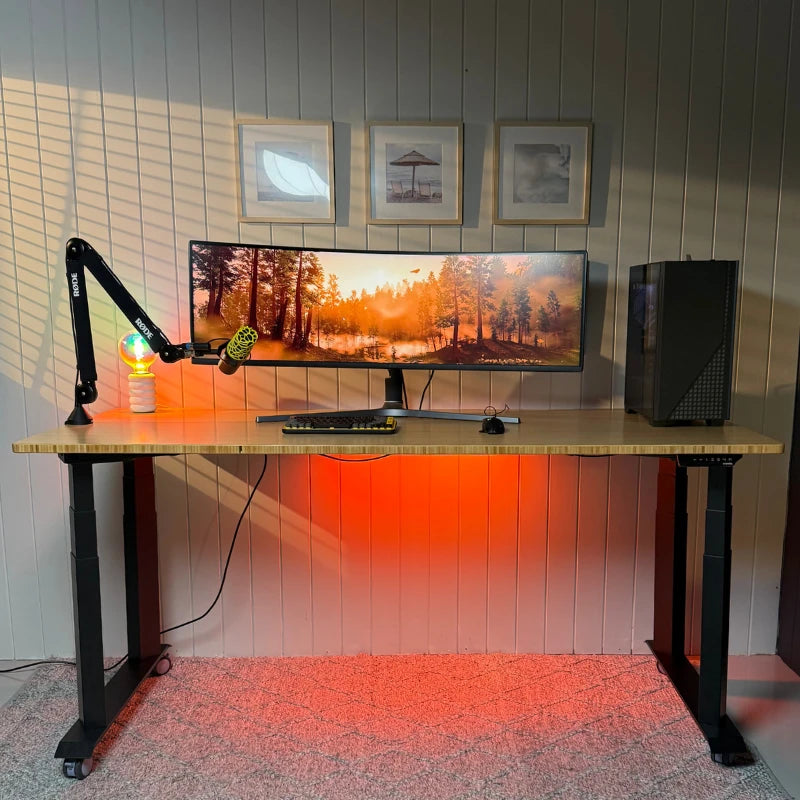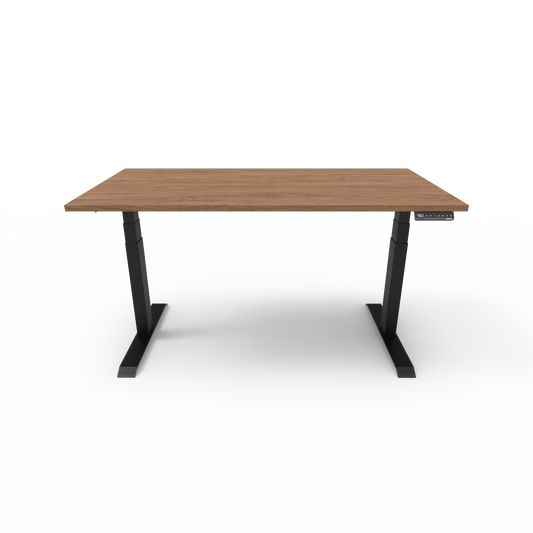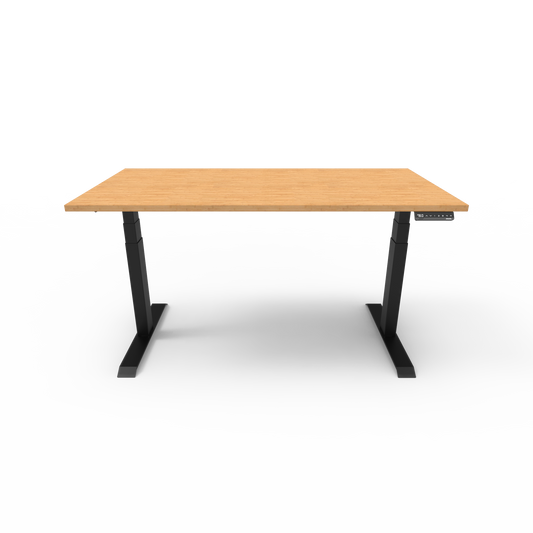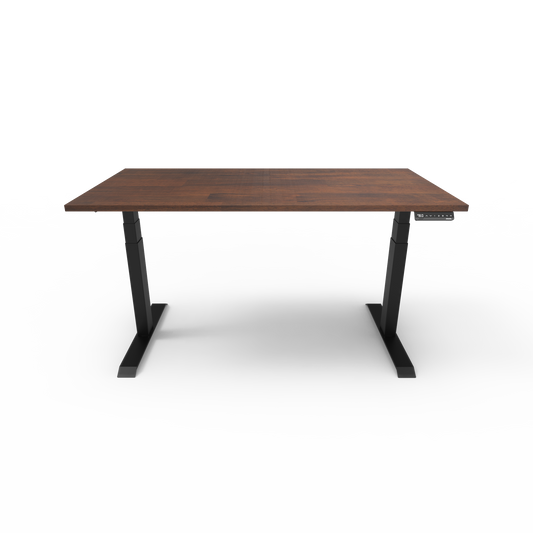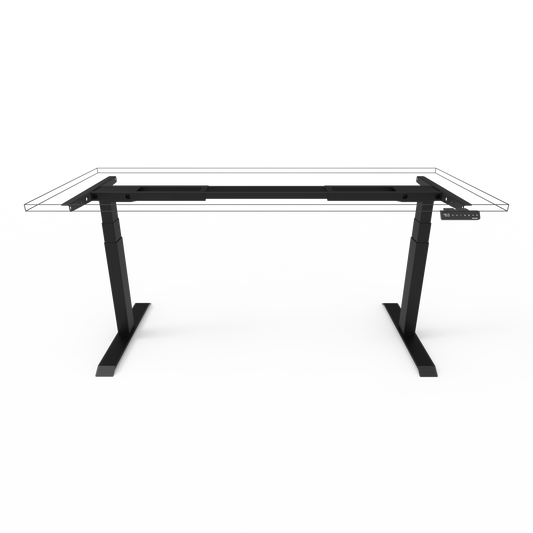A recent analysis of available data has left some people confused about the value of standing desks. One study in particular, the Cochrane review of 20 sit-stand studies, offered confusing results and garnered a lot of attention.
Is there evidence that standing desks improve our health?
It’s important to remember that just because we’re lacking in data doesn’t mean we’re lacking in evidence. Many studies have conclusively demonstrated the real and potentially fatal risks of prolonged sitting, and we have every common sense reason to believe that standing desks do reduce sitting time. It’s fine to wait for scientific certainty, but don’t harm your mind and body in the meantime!
Everything In Moderation
We know that sitting for extended periods of time is bad for your health. Even reputable international health organizations like the Centre for Disease Control (CDC) and The World Health Organisation (WHO) acknowledge this. The WHO maintains that a sedentary lifestyle and physical inactivity is one of the top ten leading causes of death in the world.
We know that standing desks and sit-stand combination desks are practical ways to reduce daily and yearly time spent sitting, though it is less clear what the exact health benefits of standing desks are, and whether standing for long periods is any better than sitting.
In general, it’s better to vary your posture as much as possible. Movement is the goal—as much of it as possible. Standing desks aren’t meant to completely substitute sitting for standing, but rather to offer variation and moderation in both postures. Make sure you know the pros and cons of sitting and standing desks. If you’re just standing in one place all day, it might not be better than sitting at all, and you’ll just be adding extra stress and strain on your legs and feet. The problem isn’t just sitting for long periods, but physical inactivity in general.
Motion and energy expenditure is the goal, which means that sitting and standing in moderation is the best option, rather than switching entirely from sitting to standing. For a beginner’s guide, See our post on How long you should stand at your standing desk.
Standing desks aren’t the only option, either. Treadmill desks that require walking in place, and level desks that necessitate motion with a balance board, are two options that might also reduce workplace sitting time. A combination of sitting, walking, and standing is the ideal, so whatever equipment helps you reach that goal is the right equipment to use.
Plenty of Evidence
Part of the reason that some critics suggest that we don’t have enough evidence to support standing desks is that not enough large, reliable, and ongoing studies have been carried out. Larger and longer-term studies are certainly necessary for any strong conclusions to be drawn. Small study sample sizes can be quick, cheap, and efficient ways to gather information about a question or issue, but their results can’t necessarily be considered definitive, and need to be carefully considered. Small sample sizes are risky when research is concerned, because of the hazard of choosing an accidentally biased group, like one that is already more or less healthy or physically active, or prone to sitting or standing for other reasons. But one of the primary functions of smaller studies like these is to demonstrate the need for longer studies performed by larger, reputable scientific or educational institutions.
One CDC study claimed that sit-stand desks were successful at reducing seating behaviour by as much as an hour a day. This change reduced back and neck pain and improved employees’ overall moods.
Even further than that, the health improvements all vanished once the sit-stand desks had been removed for 2 weeks. This CDC study did acknowledge however that the study group was too small and not sufficiently randomized. There was a degree of bias present, as participants self-reported their data by survey, and were from an already fit and healthy demographic, which could make them more prone to health benefits, or else less prone to improvement because their health was already so positive. Though the study cannot prove causality, the available data strongly supports the need for additional research into the health benefits of standing desks.
Wide research has already shown that sitting for extended periods of time is a health hazard, and that office spaces have become more sedentary over time. And many the studies we do have about standing desks do seem to show that standing desks do decrease time spent sitting down. It is not clear yet whether or not standing for long periods of time has comparable adverse health effects, which is part of the reason that accredited health bodies recommend a variety of workplace positions, including sitting, standing, stretching, and walking around.
It’s important to draw a distinction between correlation and causation before drawing conclusions about any study, and it’s true that much of the available research only establishes a correlation between the presence of standing desks and the reduction of sitting time. But this is a global health crisis we need to work on, and it seems highly likely, though perhaps not scientifically certain, that standing desks are a path towards doing so.
What We Know
Reducing sedentary behavior has a significant positive impact on overall health, in the present and future, and for the body and mind. The WHO attributes 2 million deaths per year to physical inactivity, suggesting that sedentary lifestyles are one of the top 10 leading causes of global death and disability. It is estimated that up to 85 percent of the world’s population leads a sedentary lifestyle. And as office and entertainment cultures grow and shift to include sitting for longer periods of time, the negative effects are growing into a serious and pervasive public health issue. Sedentary habits don’t begin in adulthood in offices, either. The world’s children are increasingly inactive, spending longer hours in classrooms and stretches of time in front of televisions and electronics.
The combined time can lead to death by stroke, diabetes, or heart attack. People with sedentary lifestyles may carry double the risk of cardiovascular disease compared to their more active counterparts. Even the short-term, nonlethal effects of sitting too long are hugely problematic. The host of health issues that long-term sitting is related to includes a loss of bone density, stiff joints, and decreased mobility. It’s linked to poor circulation and a weakened heart, which can cause an increase in fatty acids in the blood, leading in turn to blood clots and heart attacks. Sitting too long weakens your underused muscles, especially in the legs and abdomen, which affects balance and range of motion, as well as physical appearance. And most of us are too familiar with the stiff neck, sore shoulders, and aching back that come so commonly with TV binges or a long day at the office.
Our brains also require physical exercise in order to work well, and inactivity can have serious consequences for mental health. Without fresh blood and oxygen, our brains slow down along with the rest of our bodies, which clouds our reasoning and can make us depressed and distracted. Prolonged sitting can increase anxiety and cause insomnia and other sleeping disorders.
Moving around improves general cardiovascular health, lowering the blood pressure and regulating blood sugar which fosters energy and immune function. It increases flexibility, muscle strength, endurance, boosts the metabolism and facilitates body fat and toning control. Overall, physical activity keeps us healthy, boosting our immune systems and improving our overall health and mental functioning.
Every Little Bit
Even small lifestyle changes have been shown to have impressive health benefits. One study has shown that substituting even two hours of seated work for standing time was associated with higher levels of good cholesterol, a 11% lower BMI, a thinner waist, and lower overall blood fat. Another study has shown that substituting three hours of sitting for standing has the same health benefits as running ten marathons per year.
As smaller studies indicate the correlation between standing desks and workplace seated time, and as larger organizations like the WHO campaign against sedentary lifestyles, it will inspire large-scale studies to eventually establish causation. Until then, whether or not you incorporate a standing desk into your office routine is up to you, though the best evidence is decidedly stacked against sitting.
It’s common sense: sitting too long is bad, and you’re more likely to stand up if you give yourself the option to do so. If you want to wait for proven causal relationships between sit-stand workstations and sitting time before you make the switch, it is wise to go a very little bit out of your way to avoid prolonged sitting. Set alarms to take standing or walking breaks. Whatever works for you—anything you can do to break up your sedentary time.
We might need larger-scale studies to prove causation, but we already know that we should reduce sedentary behaviour in our lifestyle and that standing desks might be a path towards doing so. Since small changes can make such a big difference in your health, if it’s possible and convenient to do so, why not give it a try?
For more information on this, please contact us here.
